What is Advertising Attribution? A Guide to Attribution Models (2023)

Do you know how your marketing efforts are influencing your customers’ decisions? How can you tell which marketing channel or touchpoint is the most effective in driving conversions? How can you allocate your marketing budget more wisely and efficiently?
These are just some of the questions that advertising attribution (or marketing attribution) can help you answer. Advertising attribution measures how marketing channels and touchpoints influence customer behavior and outcomes.
In this article, we will provide you with a comprehensive explanation, guide, and examples of advertising attribution. You will learn how to apply this technique effectively, and what are the key points to consider. Whether you are new to advertising attribution or want to improve your existing knowledge, this article will be useful for you. Let’s get started!
| 💡 Recommended reading: |
What Is Advertising Attribution?
Advertising attribution is a technique that tracks and measures how different marketing touchpoints affect consumer actions, especially conversion events.
It uses statistical and methodological approaches to credit these touchpoints, aiming to improve marketing decision-making by showing which initiatives or channels are more effective in influencing consumer behavior and allocating resources.
In short, advertising attribution evaluates and assigns value to different marketing touchpoints that lead to desired outcomes. It helps marketers optimize their marketing performance and reduce their costs.
Based on that, marketers can assess the effectiveness of their multi-channel advertising campaigns and optimize marketing spending, which is highly beneficial for businesses in this technology-developed era.
Various attribution models distribute credit based on rules or algorithms you refer to, such as multi-touch or first-touch marketing attribution. They all provide valuable insights for data-driven decision-making and improving marketing ROI (return on investment), so feel free to choose whatever suits you the most.
What Is An Example Of Attribution Advertising?
Advertising attribution can be challenging to plan or understand initially, but it becomes easier with practice.
Let’s take the example of an electronic business named A, which runs an online advertising campaign using different channels such as display ads, social media ads, and search engine ads.
The business wants to know which channel is most effective in driving conversions and sales on their website, so they use an attribution model to track the customer journey from seeing the ad to making a purchase.
Here are the steps of the customer journey for this example:
- Step #1: A potential customer named Helen is browsing social media and sees a display ad for A’s latest smartphone.
- Step #2: Helen clicks on the ad, which takes her to A’s main website.
- Step #3: Helen researches the product features, reviews, and prices on several websites but does not buy it yet.
- Step #4: Later, Helen searches for the product on a search engine to find the best deal. She clicks on an ad for A’s website and uses a discount code from the ad to make a purchase.
- Step #5: A’s attribution model identifies that the search engine ad is Helen’s last interaction before purchasing.
If most of A’s customers follow a similar customer journey, the business can infer that the search engine ad is the most effective advertising channel or touchpoint based on last-touch attribution. (This means that the business assigns full credit for the sale to the search engine ad, as this was the final touchpoint that converted the customer)
Business A applies the last-touch attribution model to identify the last touchpoint that directly influenced customer purchases. This model is simple and straightforward to implement but overlooks the roles of other touchpoints in the customer journey.
If relying solely on this last-touch attribution model, Business A may allocate all its resources to one search engine, neglecting the potential impact of other advertising channels and touchpoints in attracting and engaging customers.
Therefore, it’s advised to explore other attribution models that account for multiple touchpoints in the customer journey, as discussed in the next section.
What Are The Types Of PPC Attribution Models?
PPC stands for pay-per-click, and this online marketing method is exceptionally famous for those who want to advertise their brands, businesses, or websites on any search engine (like Google) or social media (like Facebook, TikTok, Instagram).
Related to that, PPC advertising attribution models exist to help you evaluate the effectiveness of your PPC marketing campaigns across platforms and their conversions to help save costs later.
Now, let’s find out which models are the most applicable to you!
First-click attribution
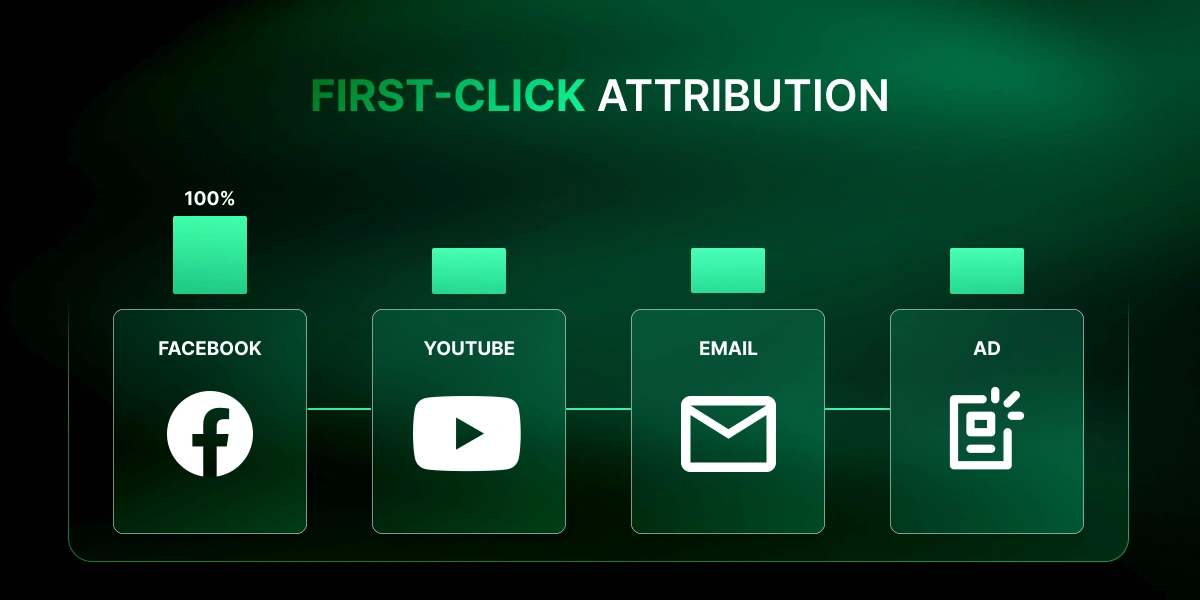
First click attribution appreciates the first touchpoint that the customers make in their journey, so all the credits for conversion are given to it.
Because of that, this model can perfectly support businesses in building brand awareness or understanding their clients’ interests better. Furthermore, the first interaction marketing attribution model is helpful for those who want to improve the top-of-funnel marketing.
In contrast, this method may not accurately reflect the actual value of touchpoints further along the customer journey, as you will ignore the impact of the other subsequent interactions.
Last-click attribution
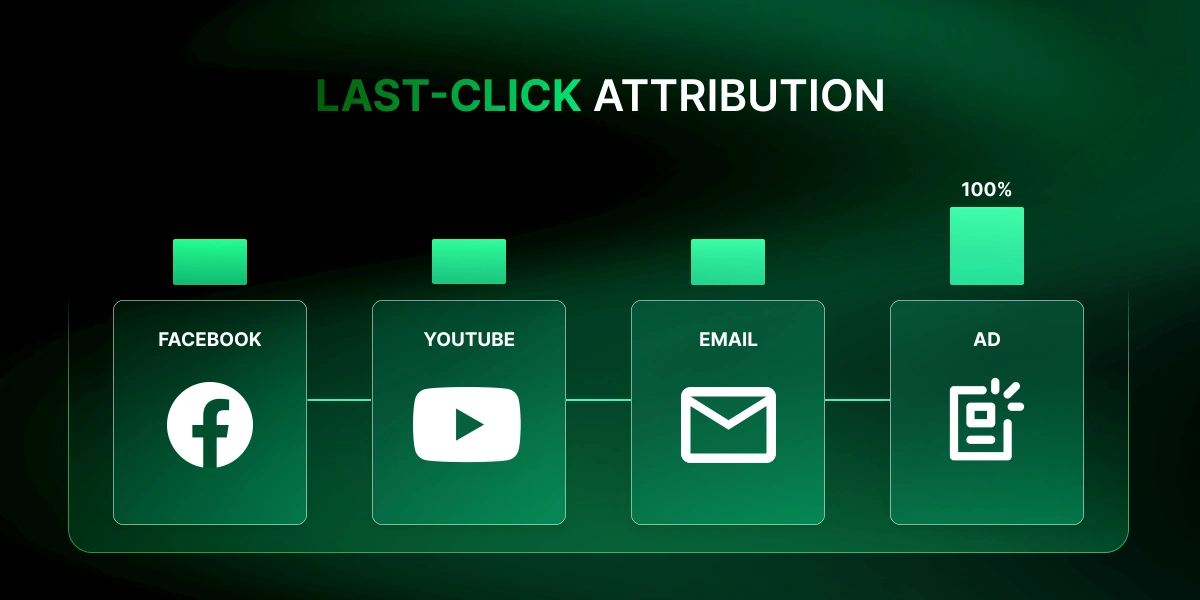
Last click attribution is different from the previous method. This model credits the final interactions (which likely leads to the actual conversion).
Based on that, marketers frequently use this ad attribution model if they want to analyze the immediate impact to optimize specific campaigns or highlight the touchpoint that directly drove the conversion.
However, since the model requires you to neglect the contribution of earlier touchpoints that influenced the customer, the role of the initial touchpoints (during the customers’ journey) is often undervalued.
W-Shaped Attribution
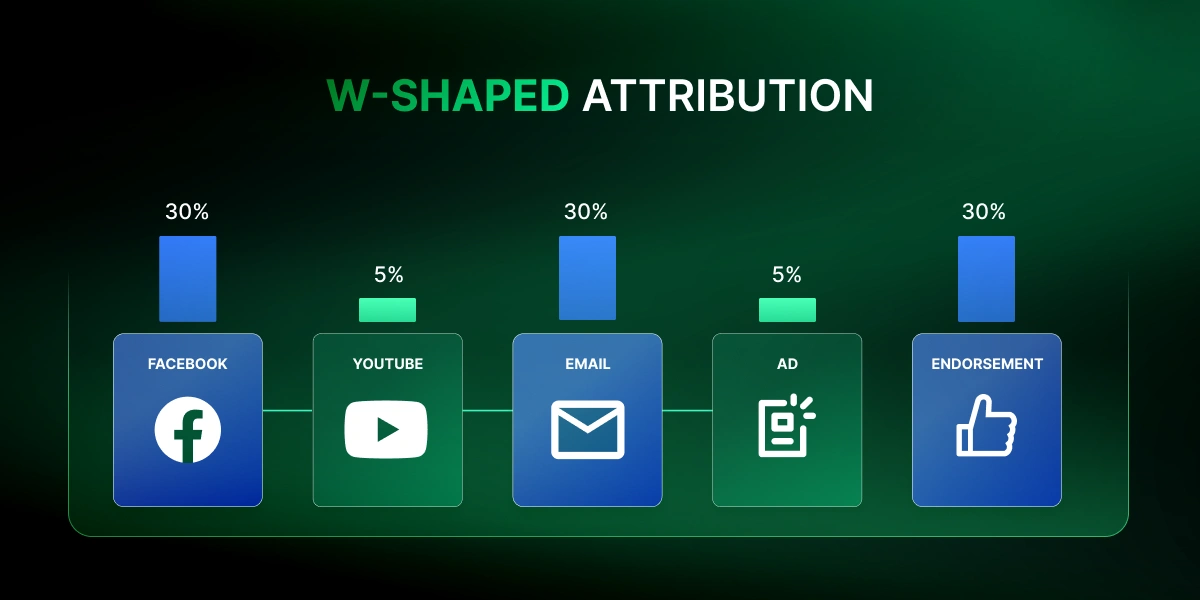
W-shaped recognizes three key touchpoints: the first touch, the lead creation touch, and the opportunity creation touch. In detail:
- The first touch refers to the first-ever interaction a customer has with a brand or ad that introduces them to the product or service. This touchpoint is considered significant because it helps create awareness and generate interest.
- The lead creation touch is the touchpoint where a customer takes action that qualifies them as a potential lead or prospect for the business. This could be a form submission, newsletter signup, or any action allowing the business to nurture the lead further.
- The opportunity creation touch is counted when the lead takes a significant step toward becoming a customer (starting to buy your products, requesting services, or subscribing to premium packages).
Due to this significant feature, W-shaped ad attribution helps assign credit to these touchpoints along the customer journey to understand the effectiveness of marketing channels and optimize strategies.
U-Shaped Attribution (Position-Based)
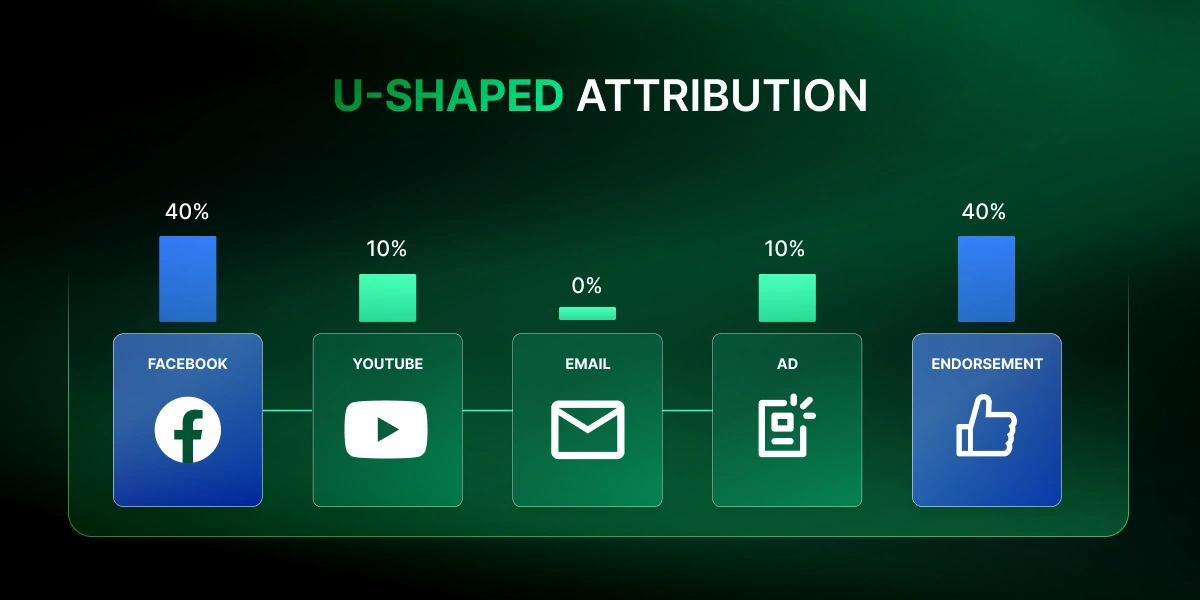
Compared to the previous W-shaped, the U-shaped attribution is less complex since it focuses on only two touchpoints: the first and the last.
- The first touchpoint (takes 40% of the credit) symbolizes the initial interaction that exposes the brand or product to the customer, and marketers can look at this to raise their awareness and generate interest.
- The last touchpoint (also takes 40% of the credit) denotes the final interaction that results in conversion or purchase. With this, marketers can indicate customer’s intent and decision-making process.
- Next, the 20% last percent of the credit is counted for any touches between the two mentioned touchpoints.
All in all, both touchpoints help highlight the impact of these key interactions throughout the customer’s journey, which also supports future ad campaigns for various types of businesses.
Time Decay Attribution
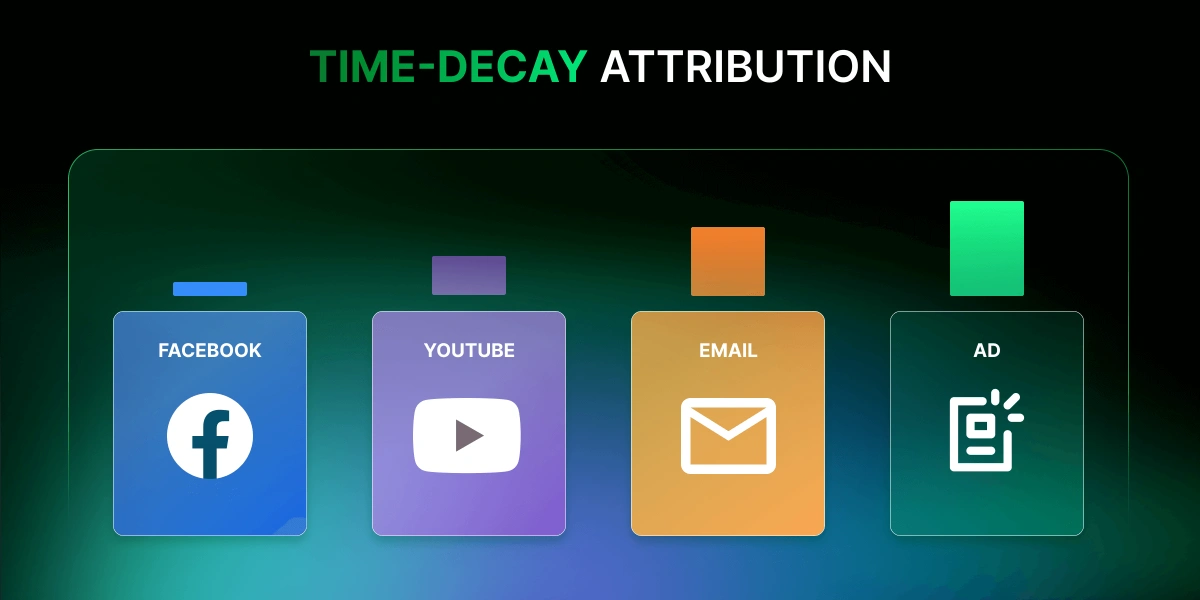
Unlike the previous U-shaped attribution, the time decay attribution assigns more credit to the touchpoints that are closer to the conversion or purchase. This means that the last touchpoint receives the most credit, followed by the second-last, and so on.
The rationale behind this attribution model is that the touchpoints that are nearer to the conversion or purchase have more influence on the customer’s decision-making process. Marketers can use this model to identify the most effective touchpoints in driving conversions or purchases and optimize their campaigns accordingly.
However, this attribution model also has some limitations. It may undervalue the role of the first touchpoint in generating awareness and interest for the brand or product. It may also ignore the impact of other factors, such as seasonality, promotions, or external events, on the customer’s journey.
Linear Attribution
Linear attribution is a simple and straightforward attribution model that assigns equal credit to all the touchpoints in the customer journey. This means that every touchpoint, from the first to the last, receives the same percentage of credit for the conversion or purchase.
The advantage of this attribution model is that it acknowledges the role of every touchpoint in influencing the customer’s decision. Marketers can use this model to get a holistic view of the customer journey and evaluate the performance of all their advertising channels and touchpoints.
However, this attribution model also has some drawbacks. It may overvalue the role of some touchpoints that are less relevant or influential for the customer’s decision. It may also ignore the differences in the impact of different touchpoints at different stages of the customer journey.
Data-Driven Attribution
Data driven attribution is an advanced and sophisticated attribution model that uses machine learning and statistical algorithms to assign credit to the touchpoints in the customer journey. This means that the credit for the conversion or purchase is not based on predefined rules or assumptions but on actual data and patterns from the customer behavior.
The benefit of this attribution model is that it can capture the complex and dynamic interactions among different touchpoints and their impact on the customer decision. Marketers can use this model to get a more accurate and realistic view of the customer journey and optimize their campaigns based on data-driven insights.
However, this attribution model also has some challenges. It requires a large amount of data and computational power to run the algorithms and produce the results. It may also be difficult to explain or interpret the logic behind the credit assignment, as it is based on complex mathematical models.
Tips To Choose The Most Suitable Marketing Attribution Models
However, if you still don’t know how to choose the most appropriate marketing attribution for your business, here are my tips for you:
- Always define your goals. It’s because you will need to choose an attribution model accordingly, whether your goal is to build brand awareness, increase sales, or attract new clients.
- Evaluate the quality and availability of your data-supporting tools. It’s a must-do process as some attribution models necessitate more detailed and accurate data, so you need to ensure that you can meet the approach’s requirements.
- Don’t forget to consider the unique characteristics of your industry and sales cycle. For example, shorter sales cycles benefit from first-touch or last-touch attribution, while longer and more complex cycles require linear or time decay attribution.
- Test different attribution models to see which aligns best with your business and provides more accurate insights. After that, you can compare results and refine/optimize your attribution strategy.
- Seek expert guidance if needed. All these marketing tasks may be complex for beginners, so you should ask for expert consults or utilize software platforms that offer detailed guidance or automated solutions.
The 5 Best Ad Attribution Tracking Tools
Are you wondering, “Then, how can I check or track all touch points within my customers’ journey?” and haven’t found one yet? Trust me, these tools are the best!
1. TrueProfit Parameter Generator
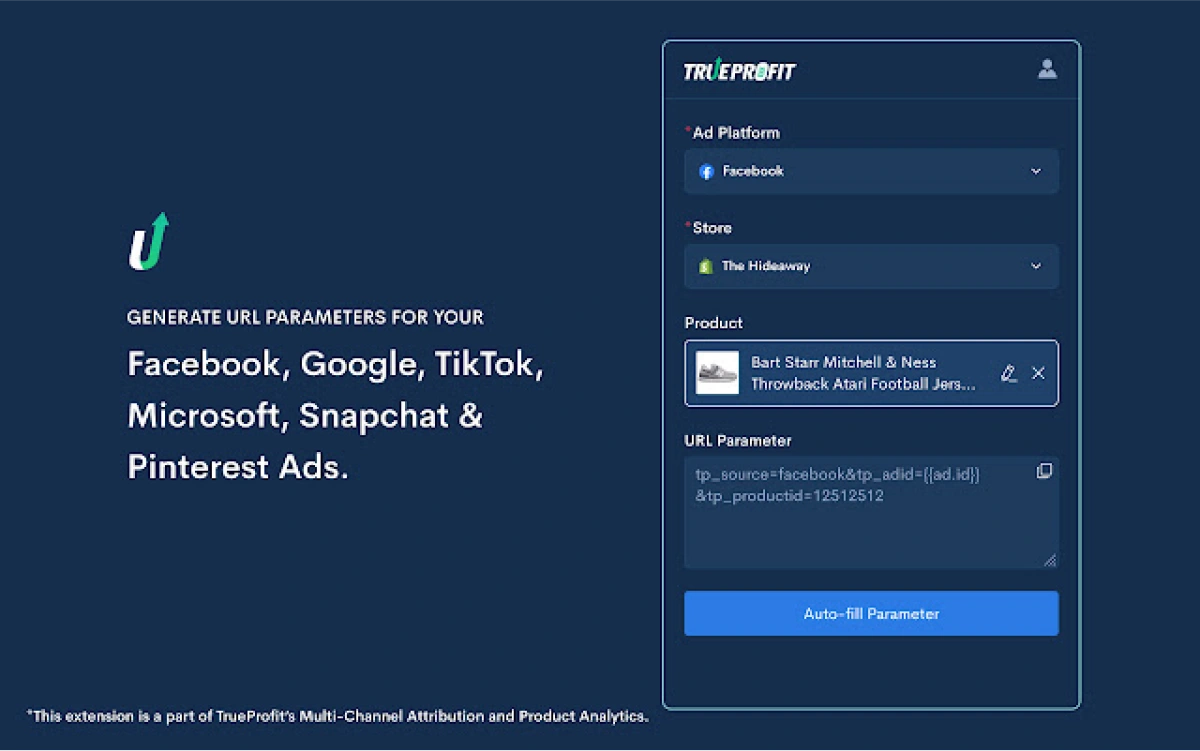
This free Chrome extension simplifies URL parameter creation for ads on platforms like Facebook, Google, and Bing, making it accessible even without coding expertise. It seamlessly integrates with the TrueProfit tracking system, offering real-time ad spend and profit monitoring.
Identifying top-performing parameters also aids in enhancing ad performance and automates parameter generation, potentially saving time and resources.
Side note: This application reaches its full capacity only when paired with TrueProfit. Consider opting for a TrueProft account to experience this extension!
2. Google Analytics
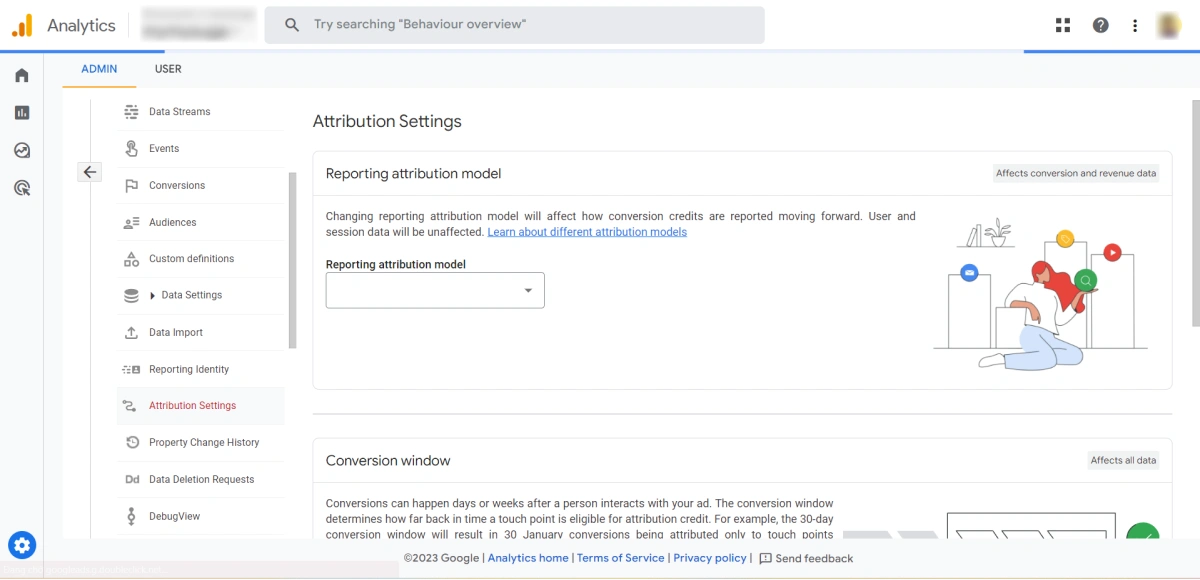
Google Analytics is the most famous online analytics tool that offers attribution reporting features. In case you want to do last-click, first-click, and data-driven attribution, Google Analytics is always one of the best options.
3. Adobe Analytics
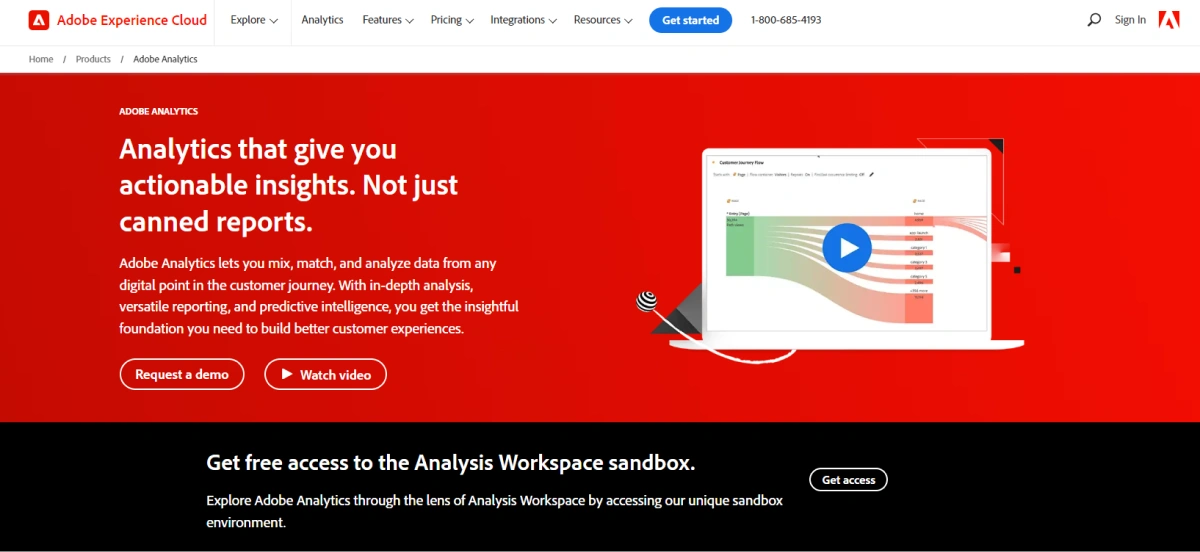
This online tool offers different attribution models, including linear, time decay, and custom models. These detailed insights into the customer journey help marketers measure the impact of their marketing efforts perfectly.
4. Neustar
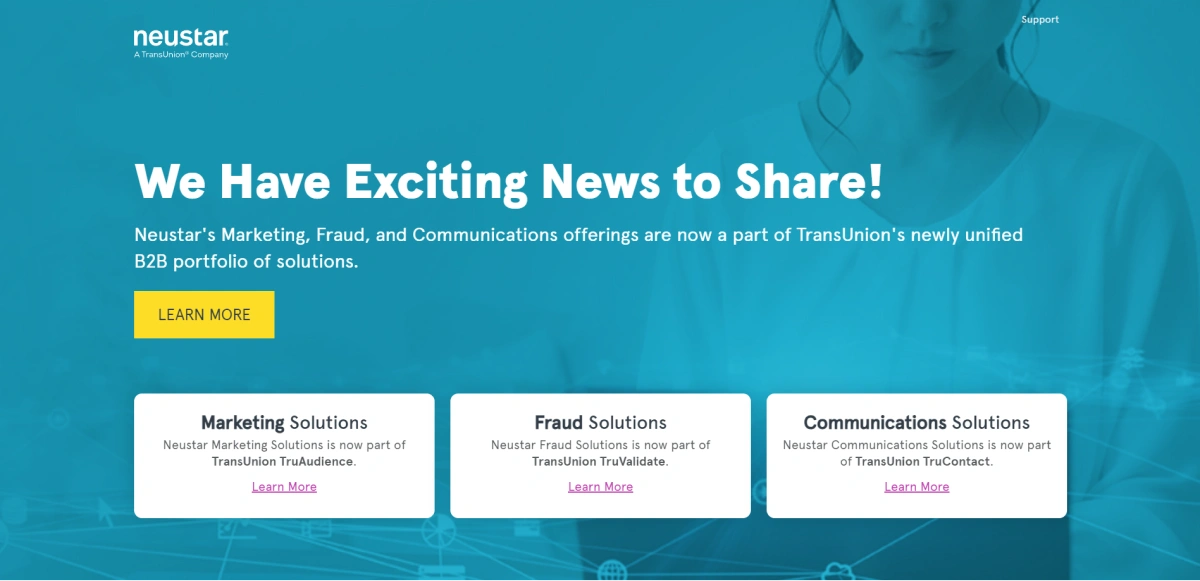
Neustar is a leading technology company specializing in data tracking solutions. Whether identifying customer preferences, tracking engagement metrics, or detecting fraudulent activities, Neustar offers everything to drive marketing campaign success (both online and offline).
5. Facebook Attribution
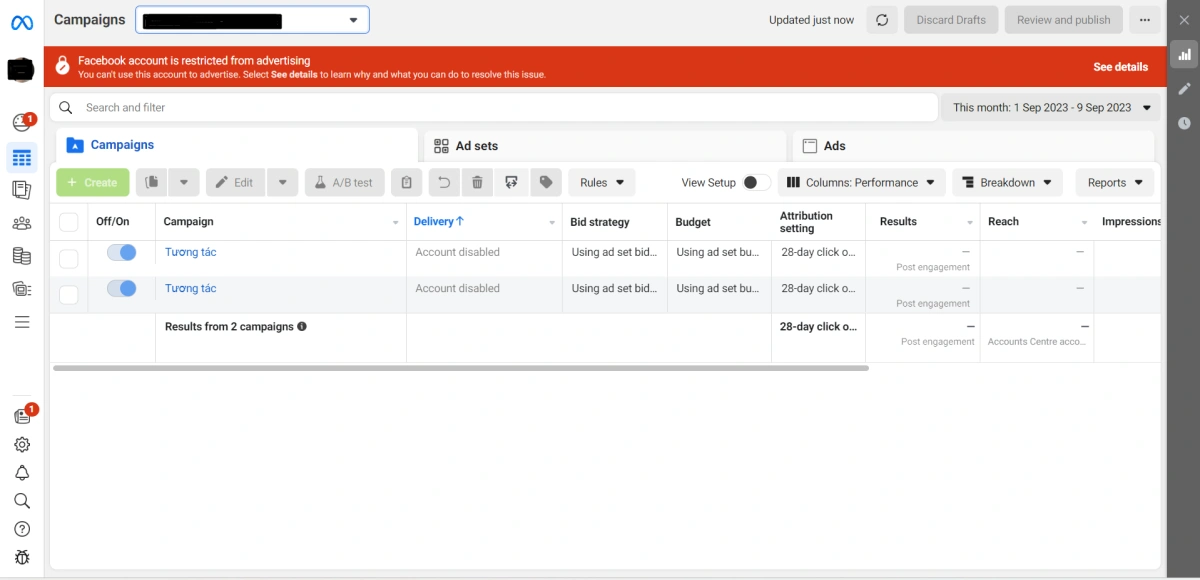
Just as its name tells, Facebook Attribution is a tool developed by Meta that focuses specifically on measuring the impact of ad campaigns on the Facebook platform.
Besides allowing marketers to do various multi-touch attribution models, it can also give insights into cross-device and cross-channel attribution.
Final Words
Advertising attribution is a technique that helps you measure and optimize the impact of your marketing channels and touchpoints on your customer actions and outcomes. It can be challenging to grasp at first, but we hope this article has helped you understand it better and apply it to your marketing strategies and goals.
If you have any questions or feedback about advertising attribution, please feel free to share them with us. We appreciate your input and interest, and we look forward to hearing from you.
Discover what proper profit-tracking looks like at trueprofit.io


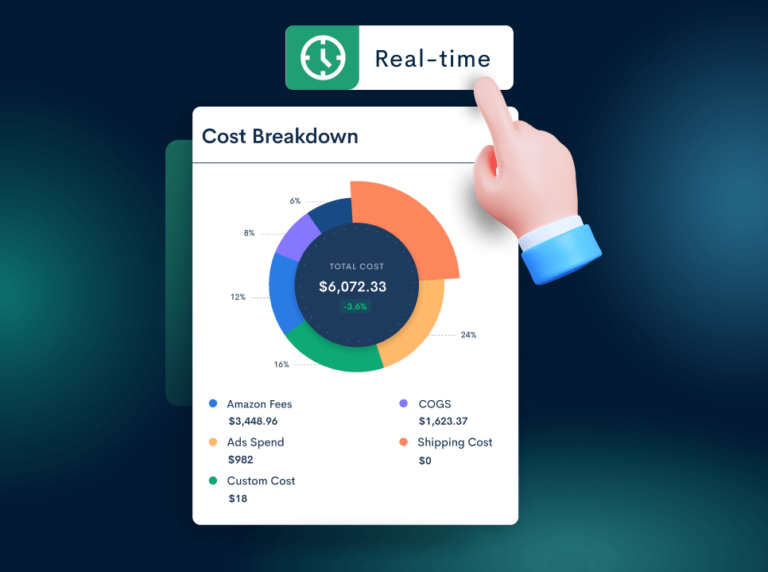
![A Comprehensive Guide to Data Driven Attribution Model [2023]](https://trueprofit.io/wp-content/uploads/2023/09/Data-Driven-Attribution-1-768x572.webp)